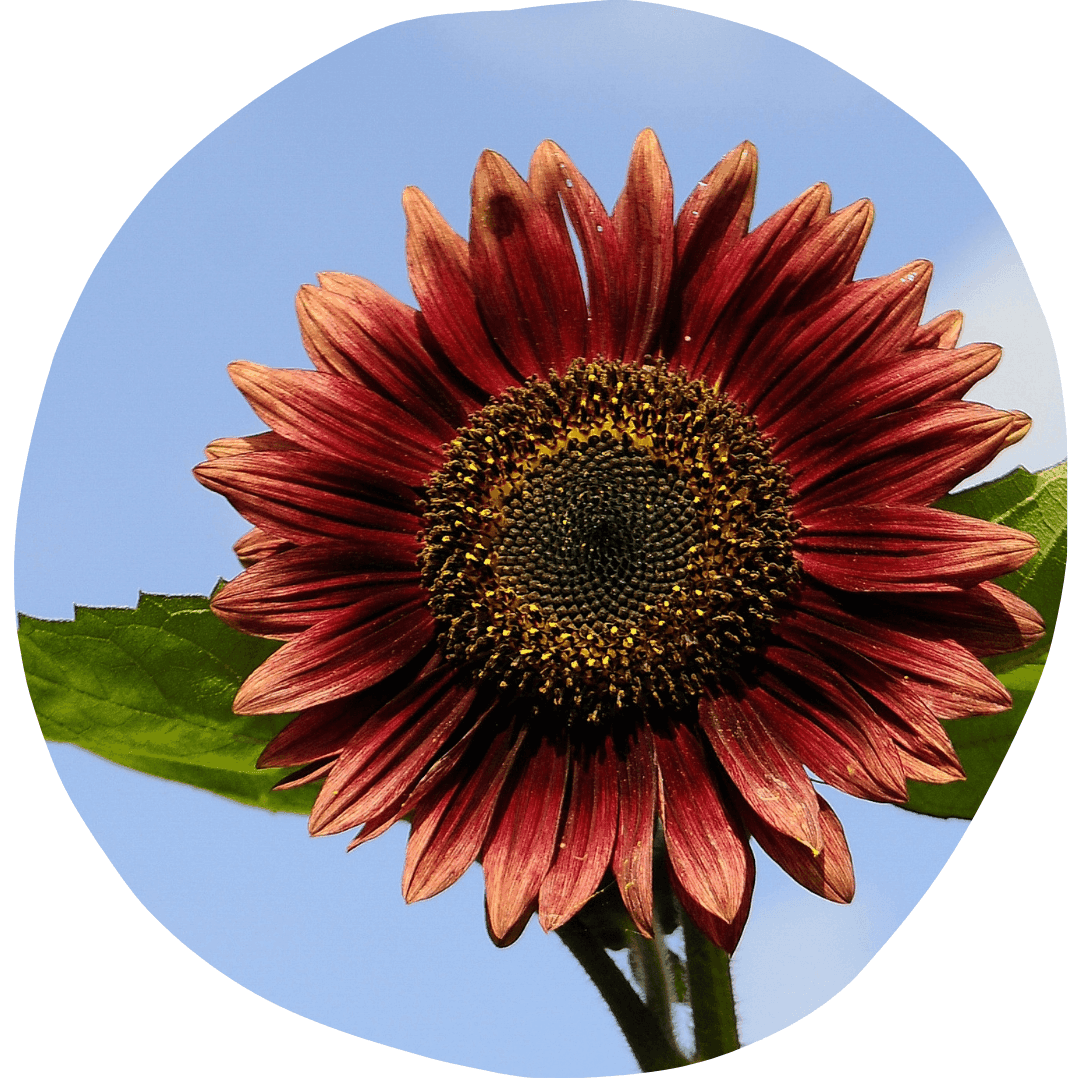How to Grow Sunflowers
Growing Conditions
Sunflowers are annuals that thrive in full sun and hot temperatures. They're attractive to pollinators and produce an abundance of shiny seeds that birds love, so choose and open and sunny location when planting. Consider the mature height of your chosen variety when planting; dwarf sunflowers may only get to be a few feet tall, while tall varieties can grow to be 10' or taller! The tall varieties in particular should be planted in a location sheltered from strong winds, and they do well planted against buildings or fences. Sunflowers are not picky about their soil as long as it is fertile and well draining.
Starting
Direct sow your sunflower seeds after all risk of frost has passed in the spring. They will germinate well at soil temperatures between 10 and 20°C. Plant multiple rounds of seeds over several weeks through the spring and summer (depending on days to maturity and your growing zone) for continuous blooms through the summer and early fall. Sunflowers have sensitive roots and transplanting is not recommended. Seeds should be planted at a depth of 1" and given at least 6" of space. You may want to cover your planting site with bird netting to protect your seeds until they have sprouted.
Find our full guide to seed starting here.

Care
Water regularly, especially during hot weather, and fertilize as needed if your soil is poor. Do not over feed as this can lead to thin, weak stalks. Tall varieties may benefit from staking for extra support, especially if grown in a windy area. Sunflowers do not need to be pruned.
Pests and Diseases
Birds - Use bird netting or row cover to deter birds from eating your sunflower seeds
Squirrels - Use bird netting or row cover to deter squirrels from eating your sunflower seeds
Deer - Deer may eat the blooms off of young flowers. Protect your plants with deer fencing.
Powdery Mildew - White mildew on the top surfaces of leaves, starting as small spots and growing to cover the entire leaf.
Crop rotation, garden cleaning, and proper spacing between plants are the best ways to prevent problems caused by pests and diseases. Diatomaceous earth can be used to control crawling pest species, while sticky traps will catch flying pests. Row covers and insect netting can also prevent travelling pests from landing on your crops and causing damage. Ensure good drainage in your chosen planting spot to prevent problems with fungus and rot. Contact us for more specialized pest control methods such as beneficial nematodes.
Harvest
If you're growing sunflowers for bouquets and flower arrangements, cut the flower from the main stem before it has fully opened for the longest vase life and to encourage more growth on the main plant. Always use sharp, clean pruners when cutting flowers. Sunflowers are best when harvested early in the morning after the dew has dried. Strip any leaves from the stems of your sunflowers and place them immediately in water.
If you're hoping to harvest your sunflower seeds, leave the flowers on the plant until the foliage has died back completely and the backs of the flower heads have turned brown. Cut the stem around 12" below the flower, then hang them to dry for several days. We recommend drying your sunflower heads indoors so the birds don't get to the seeds before you do! Once fully dry, the seeds should fall out easily when rubbed with a firm hand. Seeds can be dried and saved, spread as birdseed, or roasted and eaten!

